#Bj 581
Explore tagged Tumblr posts
Text
Lord, I did not need this today:




For anyone who wishes not to be ignorant like the person I just blocked, you can read about some trans persons from history here:
If you would like to learn more about two spirit history and modern two spirit persons, I highly recommend checking out instagrammers like @ ohkairyn or @dineaesthetics. The terms of “transgender” or “non-binary” may be modern, but the concept of being assigned the wrong gender at birth or of being genderless has always been a thing.
Ok, but can we talk about Bj 581 (the Birka Warrior), please?
In 1889, a 10th century chamber grave was discovered and excavated in Birka, Sweden. The grave goods - two shields, a sword, axe, knife, spear, arrow heads, two horses, and pieces to the game hnefatafl (a Viking precursor to chess) - indicated that the person buried there was a high ranking military official, and an experienced battle strategist. Archaeologists assumed the person buried in the grave was male, and the discovery was logged as Bj 581 and not really analyzed further.

In 2017, Charlotte Hedenstierna-Jonson, a member of the Viking Phenomenon research project, and her team performed osteological and DNA analysis on the person from Bj 581. Both tests confirmed that they were biologically female. The team concluded that Bj 581 contained the first confirmed high ranking female Viking warrior.
Given the implications of this for literally everything we know about Viking gender roles, archaeologists and other scientists clambered for some alternative explanation. Some claimed that, since its original discovery, the bones may have gotten mixed up with another grave. Others claimed that, despite no traditionally female grave goods being present and no evidence of another body in the grave, the woman must have been buried with a man.
A few thoughts on all of this:
It certainly says something about our patriarchal society that the immediate reaction to a sound scientific conclusion that this was a warrior woman was to default to androcentrism. Even other archaeologists ignored the physical artifacts and original state of the grave, as well as the presence of shield maidens in Viking sagas and mythology, in order to insist that Hedenstierna-Jonson’s conclusion just had to be wrong. This person did not possess any Y chromosomes.
It says even more about our society and archaeological interpretation’s tendency toward androcentrism that, when presented with a female body in a distinctly male grave, not even in 2017 could the scientists offer the conclusion that the person was either a Viking warrior woman OR a trans Viking warrior man.
I love archaeology, it’s my favorite area of science, but my God are so many of its practitioners opposed to discoveries that defy the previous historical record. Which makes me wonder: why are you an archaeologist if you can’t handle history being rewritten by new discoveries?
40 notes
·
View notes
Text
As modern science and better archeology methods reexamine historical sites more of women’s history will emerge
by Sarah Durn September 27, 2021

The National Museum of Stockholm's Ride of the Valkyries was painted during the Victorian period, which saw renewed interest in Vikings. Fine Art Images / Heritage Images / Getty Images
In Atlas Obscura’s Q&A series She Was There, we talk to female scholars who are writing long-forgotten women back into history.
In 1871 on the sleepy island of Birka, Sweden, Hjalmar Stolpe, a Swedish entomologist turned archaeologist, discovered the lavish grave of a Viking warrior. Around the seated body were the remains of two sacrificed horses, as well as a double-edged sword, a scramasax (a long, thin knife), a bow, a shield, and a spear—every weapon known to the Viking world. It was an astonishing find, especially since Viking warrior graves rarely contain more than three weapons. There was also a full set of hnefatafl, the board game often known as Viking chess, which indicates the strategic thinking and authority of a war leader. A thousand years ago, the site would’ve abutted the Warrior’s Hall, where a garrison lived to protect the bustling Viking town of Birka. The weapons, game pieces, location: Everything told scholars that the man buried in what is known as grave Bj 581 was a prominent, well-respected Viking warrior. No one was really prepared when DNA tests were conducted in 2017 and a new story began to emerge. This was a prominent warrior, all right, but the occupant of Bj 581 wasn’t a man. She was a woman.

Viking historian Nancy Marie Brown’s new book, The Real Valkyrie: The Hidden History of Viking Warrior Women, explores what life might have been like for the warrior woman of Bj 581.
Using more evidence from the recent tests conducted on the remains, Brown traces her journey from Norway to the British Isles to Kiev then, finally, to Birka. Brown imagines the unnamed warrior meeting other prominent Viking women, such as Gunnhild, Mother of Kings, or Queen Olga, ruler of the Rus Vikings in Kiev. She also explores the Viking sagas and contemporary sources with a new lens.
How did you initially get interested in Vikings—and female Vikings in particular?
When I went to college, I actually wanted to study fantasy writing and, you know, learn to write like Tolkien. I learned very quickly that that was not appropriate for an English major in the 1970s, so I decided to study what Tolkien studied, and he was a professor at Oxford University, teaching Old English and Old Norse. So I started reading all of the Icelandic sagas that I could find in translation. And when I ran out of the English versions, I learned Old Norse so that I could read the rest of them.
One of the things I liked about [the sagas] the most was that they had really interesting women characters. There’s a queen in Norway who appears in about 11 sagas, Queen Gunnhild, Mother of Kings. She led armies. She devised war strategy. And then I was looking at the valkyries and the shieldmaids and thinking, you know, these are really interesting people that have always been considered to be mythological.
So when I learned in 2017 that one of the most famous Viking warrior burials turned out to be the burial of a woman, that just absolutely dazzled my imagination.
Is this the first confirmed grave of a female warrior that we have?
This is the one that has the best proof. There are one or two others that have since been DNA tested and proven to be female. But in each of these cases, it’s hard to say if the person in the grave, whether male or female, actually was a warrior, or if the object that we are interpreting as a weapon was used for hunting or for some other purpose.
In this case, it’s every Viking weapon known to history. So it’s such a clear result. And the DNA was so completely female.

When Stolpe discovered the Viking gravesite Bj 581 in 1887, he assumed the remains were of a man. That assumption was shown to be wrong 140 years later. Rapp Halour / Alamy Stock Photo
What do we know about the life of the Viking warrior woman in Bj 581?
In 2017, by testing her bones and her teeth, [scholars] could say she was between 30 and 40 years old when she died. They could also tell that she ate well all of her life. So she came from a rich family or maybe even a royal one. She was also quite tall, about 5’7”. By the minerals in her inner teeth, [scholars can determine] she may have come from southern Sweden or Norway, and also that she went west maybe as far as the British Isles before her molars finished forming. She didn’t arrive in Birka until she was 16.
We also have her weapons and a little bit of clothing that were found in the grave. And these link her to what is known as the Vikings’ East Way, which was the trade route from Sweden to the Silk Road.
We can link, through the artifacts and through the bones, that she could have traveled from as far west as Dublin to as far east as at least Kiev in the 30 to 40 years of her life.
How do we know that there were Viking warrior women?
They are mentioned many, many, many times in the literature. In most cases, they have been dismissed as mythological because, of course, we know warriors were men. But we don’t know that. That is an assumption that is based on traditional Victorian ideas that because women are mothers, they’re nurturing, they’re peacemakers, and they don’t fight.
That’s not historically true. Women have always fought. And they appear in most cultures until the 1800s, when Viking studies and archaeology pretty much started. So we sort of have this problem of bias in our earliest textbooks.
But now we have actual scientific proof of one warrior woman in the Viking Age. And as the scientists who did the study say they would be very surprised if she was the only one.
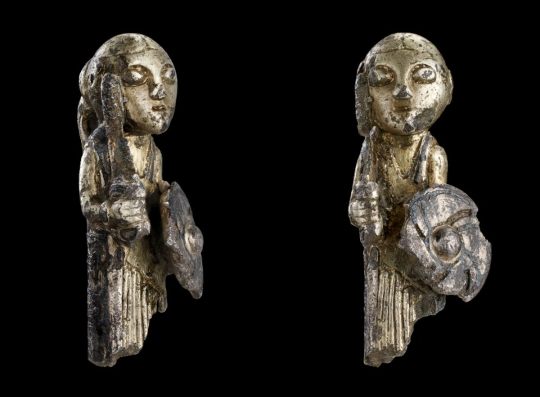
This small female Viking warrior figurine discovered in Harby, Denmark, has been interpreted as a mythological valkyrie. John Lee / National Museum of Denmark
There’s this assumption that the warrior men of myth must have been based on real people, but it’s not the same for the mythical warrior women. Why is that?
It’s just an assumption based on what people think women are like. Most of the material we have from the Middle Ages was written by men, and most of the material we have until the 1950s was written by men, and women are slowly making their way into the field of Viking scholarship. But many of them are still working under the assumptions that they were taught.
I noticed when I went back and reread some of the sagas in Icelandic that there wasn’t this clear distinction between the warrior women being mythological and the warrior men being human. When you actually look at the old Norse text, there’s a lot of words that have been translated as “men” that actually mean “people,” but it’s always been translated as “men” because it’s a warrior situation.
If you’re translating, you have to make decisions and sometimes your decisions have repercussions that you don’t expect, like writing women out of the history.

By the time Hjalmar Stolpe excavated Bj 581, he had become adept at recognizing where graves could be found in the hummocky Birka landscape. WS Collection / Alamy Stock Photo
Is it possible for historians to remove all of those biases?
No, I don’t think it is. I think we all are looking through our own lenses. But we have to revisit those sources every generation to see past biases. So when you have layer after layer after layer of removing biases, you may get closer to the truth.
What most surprised you in the course of researching your book?
One of the controversies right now in Viking studies is should we really be talking about men and women at all? Maybe there were all kinds of different genders. We don’t know if there were more than two genders in the Viking age. Maybe it was a spectrum.
If you look at this one group of sagas called the Sagas of Ancient Times that are often overlooked because they have all these fabulous creatures in them, like dragons and warrior women. It’s really interesting [because] these girls grow up wanting to be warriors. They’re constantly disobeying and trying to run off and join Viking bands. But when they do run off and join the Viking band, or, in another case, become the king of a town, they insist on being called by a male name and use male pronouns.
So it was very shocking to me to go back and read it in the original and say, “Wow, all this richness was lost in the translation.”
#Nancy Marie Brown#The Real Valkyrie#Books by women#Books about women#Atlas Obscura#She Was There#Sweden#Birka#grave Bj 581#Warrior women#Vikings’ East Way
24 notes
·
View notes
Text

Photo & text
Birka grave Bj 581 is a significant archaeological site located in Birka, Sweden. This grave, originally excavated in 1878, was initially thought to contain the remains of a male warrior due to the presence of numerous weapons and other martial artifacts. However, a 2014 osteological analysis and a 2017 DNA study revealed that the remains were, in fact, of a female.
The grave is situated high on a rocky promontory overlooking the lake and was originally marked by a large boulder, making it visible from both the settlement and the water below. The internal structure of the grave is that of a chamber tomb. The body was found collapsed from a sitting position, wearing garments of silk, with silver thread decorations.
The grave contained a variety of items including a sword, an axe, a spear, armor-piercing arrows, a sax, two shields, two stirrups, gaming pieces, dice, and the possible remains of a gaming board. Additionally, the remains of one mare and one stallion were found. Possible shards of a mirror were also discovered.
The 2017 study claimed that the person in Bj 581 was a high-ranking professional warrior. This interpretation attracted worldwide attention, as well as criticism from some academics who disputed the interpretation of burial goods. Despite the controversy, the discovery of a potential female warrior in a Viking grave has contributed significantly to our understanding of gender roles in Viking society.
Thanks ✨🫶
#birka grave bj 581#archaeological site#birka - sweden#high-ranking professional warrior#female warrior#history#💗#thank you
3 notes
·
View notes
Text
There the story might end – with a new understanding of the capacity of women and the honour given to them, even in early Viking society. But in 2020, the professor of archaeology at Uppsala University proposed a new spin: that the warrior was a trans man, as he says 'someone living as a man'. So no Viking woman warrior after all, but a person with female DNA and male gravegoods. Not a fully fledged fighting woman with respect from her Viking comrades – but a woman borrowing male goods? Wearing male clothes? Passing herself off as male? And why is this a more persuasive explanation for a woman buried as a Viking hero than the more obvious suggestion that she was a birth female Viking heroine? And that military success can be won by a woman?
"Normal Women: 900 Years of Making History" - Philippa Gregory
#book quote#normal women#philippa gregory#nonfiction#birka grave bj 581#viking#warrior#20s#2020s#21st century#archaeology#professor#uppsala university#trans man#trans#transgender#ftm#questions#persuasive#suggestion#explanation#birka#sweden#grave
0 notes
Text
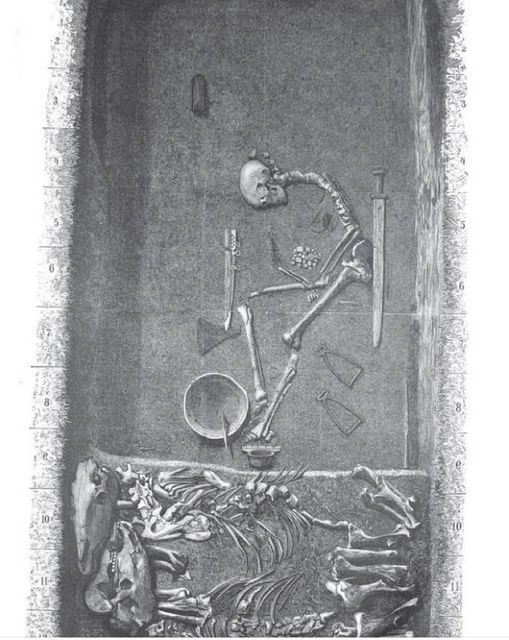
The grave known as Bj 581, situated in Birka, Sweden, is a notable archaeological site. It was first excavated in 1878 and was initially believed to be the burial site of a male warrior due to the assortment of weapons found within. This interpretation was based on traditional views of such graves.
However, a shift in understanding occurred when a 2014 osteological analysis, followed by a 2017 DNA study, confirmed that the skeletal remains were indeed female. This groundbreaking revelation led to the conclusion that the individual interred in Bj 581 was likely a high-ranking warrior of the Viking Age, and importantly, a woman. This discovery has significantly contributed to our understanding of gender roles in Old Norse society. It challenges previous assumptions and highlights the potential for women to have held high-status roles in Viking Age Scandinavia.
3 notes
·
View notes
Text
“archaeologists will know you were the gender you were assigned at birth” archaeologists don’t know SHIT. corpses are overwhelmingly identified based on grave goods, as was the case for the notable grave of a viking warrior Bj-581, who was biologically female, but was assumed to be male based off of their grave. most corpses are assumed male until proven otherwise, and archaeologists get a LOT of shit wrong. archaeologists are WAY more focused on HOW a corpse was buried before they even BEGIN to look into WHO has been buried
#this post comes from the historical archaeologist gang#also like it doesn’t matter you’re gonna be dead#shoutout to viking bj581 ambiguous icon
2 notes
·
View notes
Text
Men involved in military activity are still pushed towards a certain type of ‘masculinity’, and violence against women assumes a passivity which reinforces the connections between war being a male pursuit and victimhood being in the realm of the female.60 The modern truism that ‘women and children’ are innocent and could not take part in violence remains a deep-rooted assumption. But it is continually subverted today, as it was over a thousand years ago. When men and women exist within structured ‘civilisations’ and can depend on class mechanisms to maintain the veneer of gender distinction, demarcations of what is expected of a ‘man’ and a ‘woman’ can be more easily enforced. But in the challenging environments of Viking Age Scandinavia, in communities where every person’s contribution would determine the success and survival of the group, an individual would behave according to need. A ninth-century Scandinavian trading town like Birka would be home to all manner of people from all types of backgrounds. It’s likely we’d find women who had faced conflicts and threats, then developed the means to defend themselves in response. There is no single narrative, and the skeleton in grave Bj 581 reminds us not to look for a collective ‘woman’ of the past, but instead to examine individuals, and what they can tell us about the particular time and place they lived in.
Femina_ A New History of the Middle Ages, Through the Women -- Janina Ramirez -- 2022 -- WH Allen -- 9780753558256 -- 49f425850989d7f5c4898de4b45e6359 -- Anna’s Archive
1 note
·
View note
Text
BJ 581 curse
they never tell you abt The Skeleton's Curse (bone pain)
46K notes
·
View notes
Text

Viking Women: Life and Lore by Lisa Hannet
Pages: 304 Published: 1 Feb 2023 My Rating: ⭐⭐⭐⭐⭐ Content warnings at the end
Never have I googled so many words, places, concepts and people while reading a book. This obviously means it took me probably triple the time to read than it normally would but it made the reading experience so much richer. I love when a book tickles my curiosity like this.
And I found myself putting the book down after every chapter just to think about these women. About their lives, about what they went through, even if they never actually existed, they are a representation of women like them that did exist. And I think that was the point the author was trying to make.
I’m not a huge fan of historical fiction because I always feel that I’m soaking up all this knowledge that isn’t even real and it may cloud my perception of the facts, but this format of coupling the historical fiction bits with the contextualization of these moments in history, really worked for me. Because it achieves what the author wanted, giving us a more personal perspective of these characters and a more intimate understanding of who they were, but the curtain is often pulled back to explain the context and give the reader a lesson in medieval Icelandic literature and history.
Another thing worth mentioning is that the author’s enthusiasm is absolutely infectious. The obvious love the author has for this culture and these people in this time period shines through every page. The writing is superb, as expected from someone with a PhD in literature, but the genuine passion put into this book makes the reader just as excited as the author to know more about this topic. I personally was left with so many questions (in a good way) and so many things to research about Iceland, Norway, Vikings and much more. I found myself wondering about the influence old Norse had on other languages, like old Irish and English, and all the ways these cultures impacted each other. And I could go on and on.
Melkorka really made me think about genetics and how much “Irish blood” makes up the Icelandic population.
Bergthora and Hallgerd made me think about how much a woman’s existence and personal value at this time was based on how they served their husbands.
Bera and Thorgerd made me think about fostering and a mother’s love, about the social structures in place at the time, but also how powerless most women were to men’s whims, wants and violent outbursts.
Freydis story made me think about Viking colonization, their insane maritime prowess and how much they traveled in their lifetime.
Breeches-Aud (and BJ 581) brought up a lot of cool questions about gender and more things to research.
The next one, about the three witches was probably the hardest one for me to focus on, but at the same time it was really interesting to learn that we don’t actually know what “witchcraft” meant for these people. Also some more cool questions about gender, and of course, lots of questions about the spread of Christianity in Europe. Something that Gudrun’s story also made me think about.
And Unn. The author loves Unn so much that it’s impossible not to love her too. What an amazing woman. Her story made me go look up bunch of maps of Scandinavia and the British isles and wonder again about all the influence they had on each other.
Overall, I think this book is really cool and extremely well written, and I definitely recommend it
Content warnings: death, violence, miscarriage, r*pe, murder
1 note
·
View note
Quote
A warrior, like warfare itself, is a cultural construct, practices and professions created by human societies to fulfill specific desires. To assume uncritically that men alone are warriors leads to a cascade of other assumptions about human behaviors that renders our attempt to understand those behaviors somewhat moot.
Holly Norton ("How the Female Viking Warrior Was Written Out of History")
#writeblr#warrior woman#vikings#novel writing#fiction writing#holly norton#the guardian#journalism#bj 581#archaeology#archaeological record#androcentrism in archaeology does all human sexes a disservice
2 notes
·
View notes
Text
I don’t see this addressed in the article linked, though I assume it’s addressed in the research being discussed — what methods were used to assign sex to all these early English remains?
I’m thinking of Lee Colwill’s article “The Queerly Departed”, which discusses closely-related issues. Colwill notes that a minority of remains from a similar period in Scandinavia have been chromosomally sexed, and that many have not even been osteologically sexed. In short, there are a number of remains that were identified as male solely on the grounds of “the grave contains Man Things (e.g., sword)”, or as female because “the grave contains Woman Things (e.g., brooch)”. Later work has sometimes contradicted those original assumptions — most famously the burial at Birka (grave Bj 581) that was identified as male in the 19th century because the burial goods were those of a warrior, but more recently was identified as female by people actually sexing the remains. (Whether this means “weapons = man” is not a reliable method, or it means the person in question was gender-nonconforming, or both is up to interpretation, I think.)
Osteological sexing is limited of course, and chromosomal sexing fails to account fully for intersex individuals, and neither can be used to assess gender identity for obvious reasons, but this is still data that would be good to have. If we’re looking at trends regarding male & female grave goods, “how were all these remains sexed” is information we should know because it’s kind of the best we can do without necromancing the remains and conducting interviews.
The reason I bring this up is not because I think the remains being mentioned as outliers have been misidentified, but rather the other way around: I’m wondering if there are more remains whose burial goods do not conform to assumed gender standards. How many more Bj-581-esque remains are out there where someone just wrote down “male” or “female” based on Victorian gender norms and we never doublechecked?
The article says, “for the most part, the pattern fits” — I want to know how sure we are about that.
Anyway, if whoever runs this Tumblr account has a line to the researcher working on this, it would be cool if you could pass on their approach to this issue.
The burials that could challenge historians' ideas about Anglo-Saxon gender
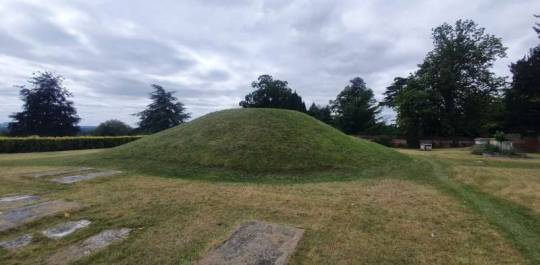
There are a significant number of Anglo-Saxon burials where the estimated anatomical sex of the skeleton does not align with the gender implied by the items they were buried with. Some bodies identified as male have been buried with feminine clothing, and some bodies identified as female have been found in the sorts of "warrior graves" typically associated with men.
In the archaeology of early Anglo-Saxon England, weaponry, horse-riding equipment and tools are thought to signal masculinity, while jewelry, sewing equipment and beads signal femininity. And, for the most part, this pattern fits.
So far though, no convincing explanation has been put forward for the burials which appear to invert the pattern. My Ph.D. research asks whether looking at these atypically gendered burials through the lens of trans theory and the 21st-century language of "transness" has the potential to improve historians' understanding of early Anglo-Saxon gender. Read more.
1K notes
·
View notes
Link
2 notes
·
View notes
Text
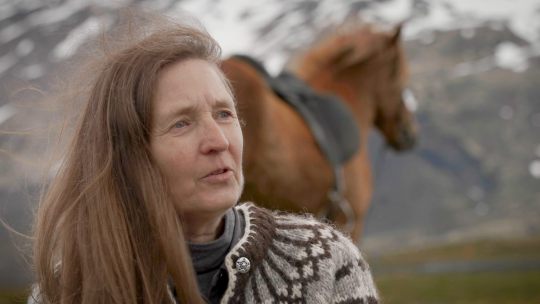
Viking historian Nancy Marie Brown’s new book, The Real Valkyrie: The Hidden History of Viking Warrior Women, explores what life might have been like for the warrior woman of Bj 581. Using more evidence from the recent tests conducted on the remains, Brown traces her journey from Norway to the British Isles to Kiev then, finally, to Birka. Brown imagines the unnamed warrior meeting other prominent Viking women, such as Gunnhild, Mother of Kings, or Queen Olga, ruler of the Rus Vikings in Kiev. She also explores the Viking sagas and contemporary sources with a new lens.
Atlas Obscura spoke with Brown about her new book, valkyries, and the assumptions that underlie the history we think we know.
How did you initially get interested in Vikings—and female Vikings in particular?
When I went to college, I actually wanted to study fantasy writing and, you know, learn to write like Tolkien. I learned very quickly that that was not appropriate for an English major in the 1970s, so I decided to study what Tolkien studied, and he was a professor at Oxford University, teaching Old English and Old Norse. So I started reading all of the Icelandic sagas that I could find in translation. And when I ran out of the English versions, I learned Old Norse so that I could read the rest of them.
One of the things I liked about [the sagas] the most was that they had really interesting women characters. There’s a queen in Norway who appears in about 11 sagas, Queen Gunnhild, Mother of Kings. She led armies. She devised war strategy. And then I was looking at the valkyries and the shieldmaids and thinking, you know, these are really interesting people that have always been considered to be mythological.
So when I learned in 2017 that one of the most famous Viking warrior burials turned out to be the burial of a woman, that just absolutely dazzled my imagination.
Is this the first confirmed grave of a female warrior that we have?
This is the one that has the best proof. There are one or two others that have since been DNA tested and proven to be female. But in each of these cases, it’s hard to say if the person in the grave, whether male or female, actually was a warrior, or if the object that we are interpreting as a weapon was used for hunting or for some other purpose.

What do we know about the life of the Viking warrior woman in Bj 581?
In 2017, by testing her bones and her teeth, [scholars] could say she was between 30 and 40 years old when she died. They could also tell that she ate well all of her life. So she came from a rich family or maybe even a royal one. She was also quite tall, about 5’7”. By the minerals in her inner teeth, [scholars can determine] she may have come from southern Sweden or Norway, and also that she went west maybe as far as the British Isles before her molars finished forming. She didn’t arrive in Birka until she was 16.
We also have her weapons and a little bit of clothing that were found in the grave. And these link her to what is known as the Vikings’ East Way, which was the trade route from Sweden to the Silk Road.
We can link, through the artifacts and through the bones, that she could have traveled from as far west as Dublin to as far east as at least Kiev in the 30 to 40 years of her life.
How do we know that there were Viking warrior women?
They are mentioned many, many, many times in the literature. In most cases, they have been dismissed as mythological because, of course, we know warriors were men. But we don’t know that. That is an assumption that is based on traditional Victorian ideas that because women are mothers, they’re nurturing, they’re peacemakers, and they don’t fight.
That’s not historically true. Women have always fought. And they appear in most cultures until the 1800s, when Viking studies and archaeology pretty much started. So we sort of have this problem of bias in our earliest textbooks.
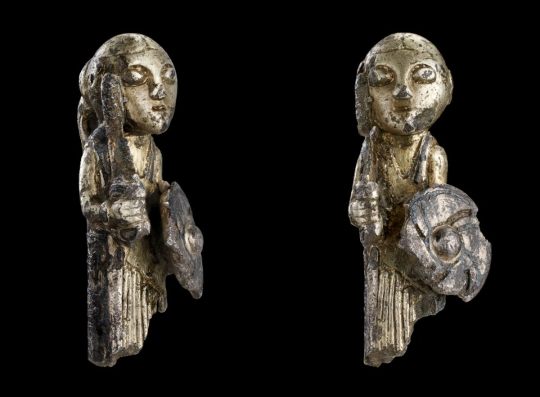
There’s this assumption that the warrior men of myth must have been based on real people, but it’s not the same for the mythical warrior women. Why is that?
It’s just an assumption based on what people think women are like. Most of the material we have from the Middle Ages was written by men, and most of the material we have until the 1950s was written by men, and women are slowly making their way into the field of Viking scholarship. But many of them are still working under the assumptions that they were taught.
I noticed when I went back and reread some of the sagas in Icelandic that there wasn’t this clear distinction between the warrior women being mythological and the warrior men being human. When you actually look at the old Norse text, there’s a lot of words that have been translated as “men” that actually mean “people,” but it’s always been translated as “men” because it’s a warrior situation.
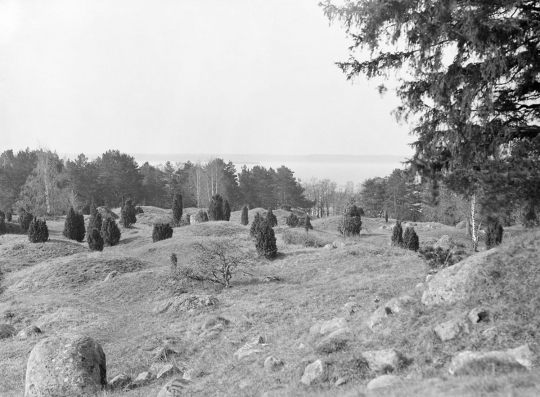
Is it possible for historians to remove all of those biases?
No, I don’t think it is. I think we all are looking through our own lenses. But we have to revisit those sources every generation to see past biases. So when you have layer after layer after layer of removing biases, you may get closer to the truth.
What most surprised you in the course of researching your book?
One of the controversies right now in Viking studies is should we really be talking about men and women at all? Maybe there were all kinds of different genders. We don’t know if there were more than two genders in the Viking age. Maybe it was a spectrum.
If you look at this one group of sagas called the Sagas of Ancient Times that are often overlooked because they have all these fabulous creatures in them, like dragons and warrior women. It’s really interesting [because] these girls grow up wanting to be warriors. They’re constantly disobeying and trying to run off and join Viking bands. But when they do run off and join the Viking band, or, in another case, become the king of a town, they insist on being called by a male name and use male pronouns.
So it was very shocking to me to go back and read it in the original and say, “Wow, all this richness was lost in the translation.”
#Nancy Marie Brown#vikings#history#women in history#archaeology#women warriors#warfare#warrior women#norse history#atlas obscura
371 notes
·
View notes
Text
I love studying history so much?? Like!! Did the person buried in grave Bj. 581 in Sweden have a favourite season? Did they laugh about inside jokes with their friends over dinner? Did they ever have a lover? Or children? What was their name? Were the amber beads the person in grave 104 at Berinsfield was buried with a gift? Inherited? Brought because they thought they were pretty? Did they like watching sunsets? Did the person in grave 144 at West Heslerton have any pets? A favourite animal? Are any of their loved ones buried in the same cemetery? If I could tell them anything I think I’d like them to know we still remember them hundreds of years later, and I still find comfort knowing that they existed.
#all of these graves are believed to belong to medieval genderqueer/trans ppl :-)#their memory is my inheritance 😌#dsdbsbsbdv sry no les mis posting tonight just me being emotional about rl dead ppl uwu’’
15 notes
·
View notes
Quote
In 2017, DNA testing of a tenth century burial from Birka in Sweden showed that a grave long considered to be a man’s belonged to a woman. The grave (Bj 581) contained two shields, a sword, an axe, two lances, twenty-five armour piercing arrows, a fighting knife, two horses and gaming pieces, and two horses with riding gear . While many seized the news with enthusiasm as proof of a historical warrior woman, others reacted with anger or scepticism. The evidence does not fit with many people’s perceptions of a woman’s place in tenth century society. The burial of women with weapons is not unique in the tenth century, although they are very unusual. Impressive arrays of military gear accompanied female burials discovered at Aunvoll and Solør in Norway. Further research will probably yield more examples. Naturally, this raises questions about sex and gender. Could the woman at Birka have lived socially as a man without the knowledge of wider society, like other examples of women who engaged in warfare by adopting a male persona in European history? If so, the discovery that she was a woman in death did not prevent burial with full honour. Another possibility is that the Birka woman was recognised as fulfilling a military role normally associated with men. As grave goods and gender do not always ‘match’ according to our social perceptions (i.e. weapons are not exclusive to men), grave goods may have been selected to reveal more about social status than social gender. So was it possible for women to become military leaders in the tenth century?
Dr Clare Downham, Women and military power in the tenth century (2019)

Artist's sketching of grave Bj 581 in Birka, Sweden
For further explanations on the subject, I highly recommend Adrienne Mayor’s work, The Amazons: Lives and Legends of Warrior Women across the Ancient World (2014) who speaks a lot about the tendency to determine quickly the gender of a grave’s corpse based on the furniture in it, and so to see males whereas there is in fact women.
95 notes
·
View notes